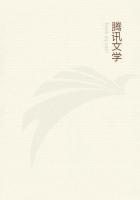While this point escapes me, another of higher interest appears most plainly; and that is the large amount of resinous material used in a single nest, especially in that of Anthidium quadrilobum, in which Ihave counted as many as twelve cells. The nest of the Mason-bee of the Pebbles is hardly more massive. For so costly an establishment, therefore, the Resin-bee collects her pitch on the dead pine as copiously as the Mason-bee collects her mortar on the macadamized road. Her workshop no longer shows us the niggardly partitioning of a Snail-shell with two or three drops of resin; what we see is the whole building of the house, from the basement to the roof, from the thick outer walls to the partitions of the rooms. The cement expended would be enough to divide hundreds of Snail-shells, wherefore the title of Resin-bee is due first and foremost to this master-builder in pitch. Honourable mention should be awarded to A. Latreillii, who rivals her fellow-worker as far as her smaller stature permits. The other manipulators of resin, those who build partitions in Snail-shells, come third, a very long way behind.
And now, with the facts to support us, let us philosophize a little.
We have here, recognized as of excellent standard by all the expert classifiers, so fastidious in the arrangement of their lists, a generic group, called Anthidium, containing two guilds of workers entirely dissimilar in character: the cotton-fullers and the resin-kneaders. It is even possible that other species, when their habits are better known, will come and increase this variety of manufactures. I confine myself to the little that I know and ask myself in what the manipulator of cotton differs from the manipulator of resin as regards tools, that is to say, organs. Certainly, when the genus Anthidium was set down by the classifiers, they were not wanting in scientific precision: they consulted, under the lens of the microscope, the wings, the mandibles, the legs, the harvesting-brush, in short, all the details calculated to assist the proper delimitation of the group. After this minute examination by the experts, if no organic differences stand revealed, the reason is that they do not exist. Any dissimilarity of structure could not escape the accurate eyes of our learned taxonomists. The genus, therefore, is indeed organically homogeneous; but industrially it is thoroughly heterogeneous. The implements are the same and the work is different.
That eminent Bordeaux entomologist, Professor Jean Perez, to whom Icommunicated the misgivings aroused in my mind by the contradictory nature of my discoveries, thinks that he has found the solution of the difficulty in the conformation of the mandibles. I extract the following passage from his volume, "Les Abeilles":
'The cotton-pressing females have the edge of their mandibles cut out into five or six little teeth, which make an instrument admirably suited for scraping and removing the hairs from the epidermis of the plants. It is a sort of comb or teasel. The resin-kneading females have the edge of the mandible not toothed, but simply curved; the tip alone, preceded by a notch which is pretty clearly marked in some species, forms a real tooth; but this tooth is blunt and does not project. The mandible, in short, is a kind of spoon perfectly fitted to remove the sticky matter and to shape it into a ball.'
Nothing better could be said to explain the two sorts of industry: in the one case, a rake which gathers the wool; in the other, a spoon which scoops up the resin. I should have left it at that and felt quite content without further investigation, if I had not had the curiosity to open my boxes and, in my turn, to take a good look, side by side, at the workers in cement and the workers in cotton. Allow me, my learned master, to whisper in your ear what I saw.
The first that I examine is Anthidium septemdentatum. A spoon: yes, it is just that. Powerful mandibles, shaped like an isosceles ********, flat above, hollowed out below; and no indentations, none whatsoever. A splendid tool, as you say, for gathering the viscous pellet; quite as efficacious in its kind of work as is the rake of the toothed mandibles for gathering cotton. Here certainly is a creature potently-gifted, even though it be for a poor little task, the scooping up of two or three drops of glue.
Things are not quite so satisfactory with the second Resin-bee of the Snail-shells, A. bellicosum. I find that she has three teeth to her mandibles. Still, they are slight and project very little. Let us say that this does not count, even though the work is exactly the same.
With A. quadrilobum the whole thing breaks down. She, the queen of Resin-bees; she, who collects a lump of mastic the size of one's fist, enough to subdivide hundreds of her kinswomen's Snail-shells:
well, she, by way of a spoon, carries a rake! On the wide edges of her mandibles stand four teeth, as long and pointed as those of the most zealous cotton-gleaner. A. florentinum, that mighty manufacturer of cotton-goods, can hardly rival her in respect of combing-tools.
And nevertheless, with her toothed implement, a sort of saw, the Resin-bee collects her great heap of pitch, load by load; and the material is carried not rigid, but sticky, half-fluid, so that it may amalgamate with the previous lots and be fashioned into cells.
A. Latreillii, without having a very large implement, also bears witness to the possibility of heaping up soft resin with a rake; she arms her mandibles with three or four sharply-cut teeth. In short, out of four Resin-bees, the only four that I know, one is armed with a spoon, if this expression be really suited to the tool's function;the three others are armed with a rake; and it so happens that the most copious heap of resin is just the work of the rake with the most teeth to it, a tool suited to the cotton-reapers, according to the views of the Bordeaux entomological expert.













